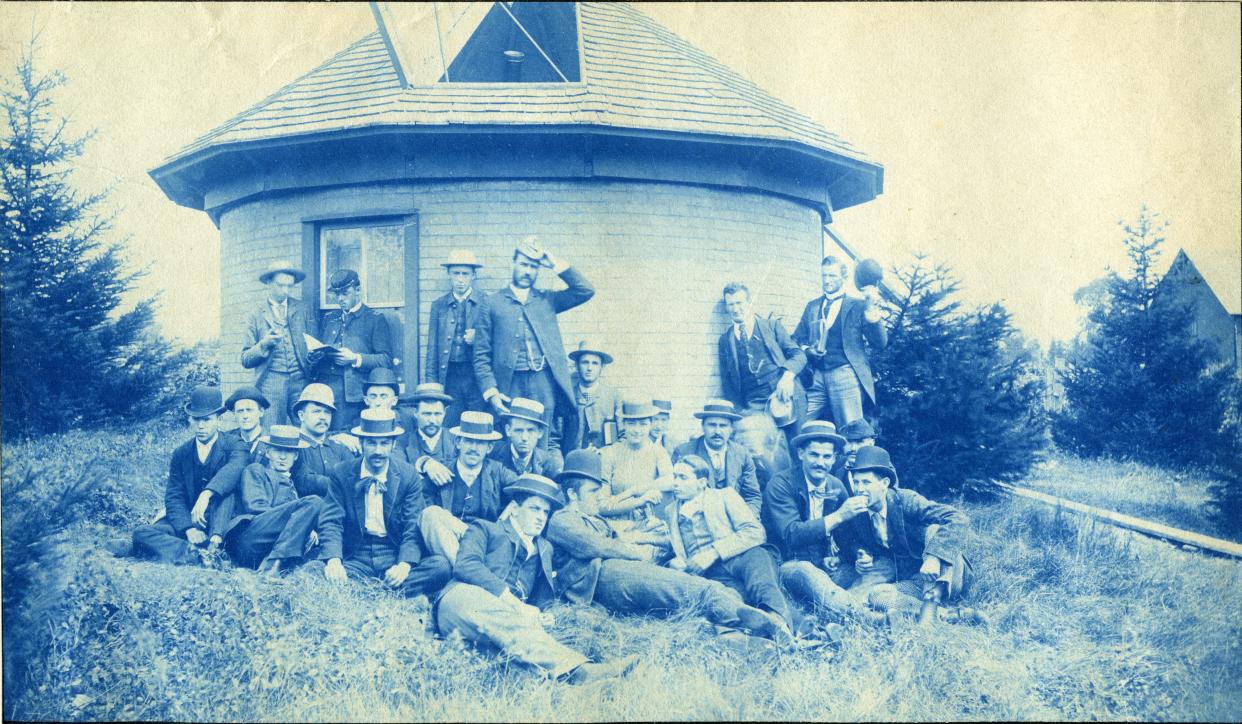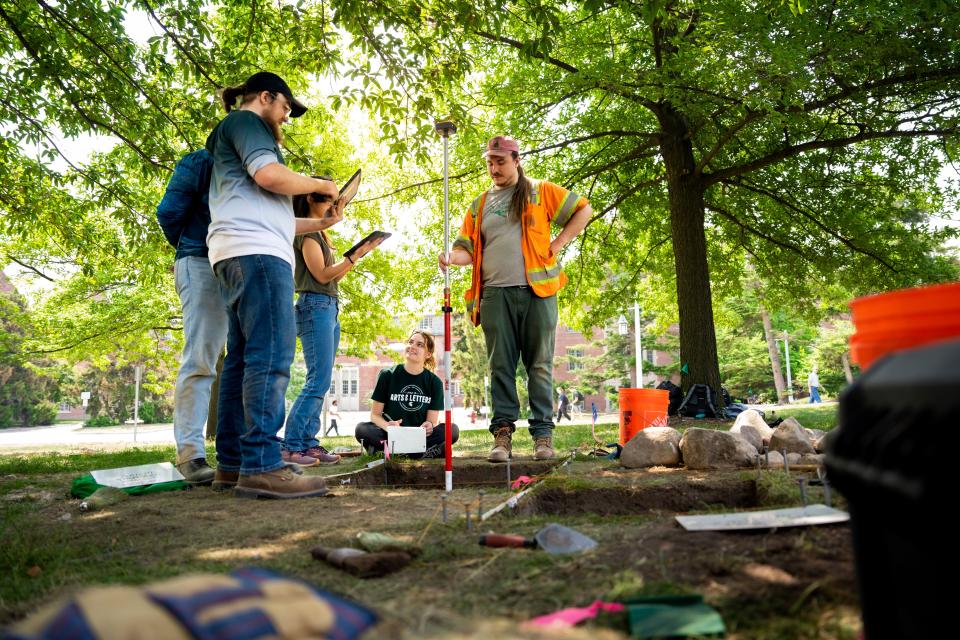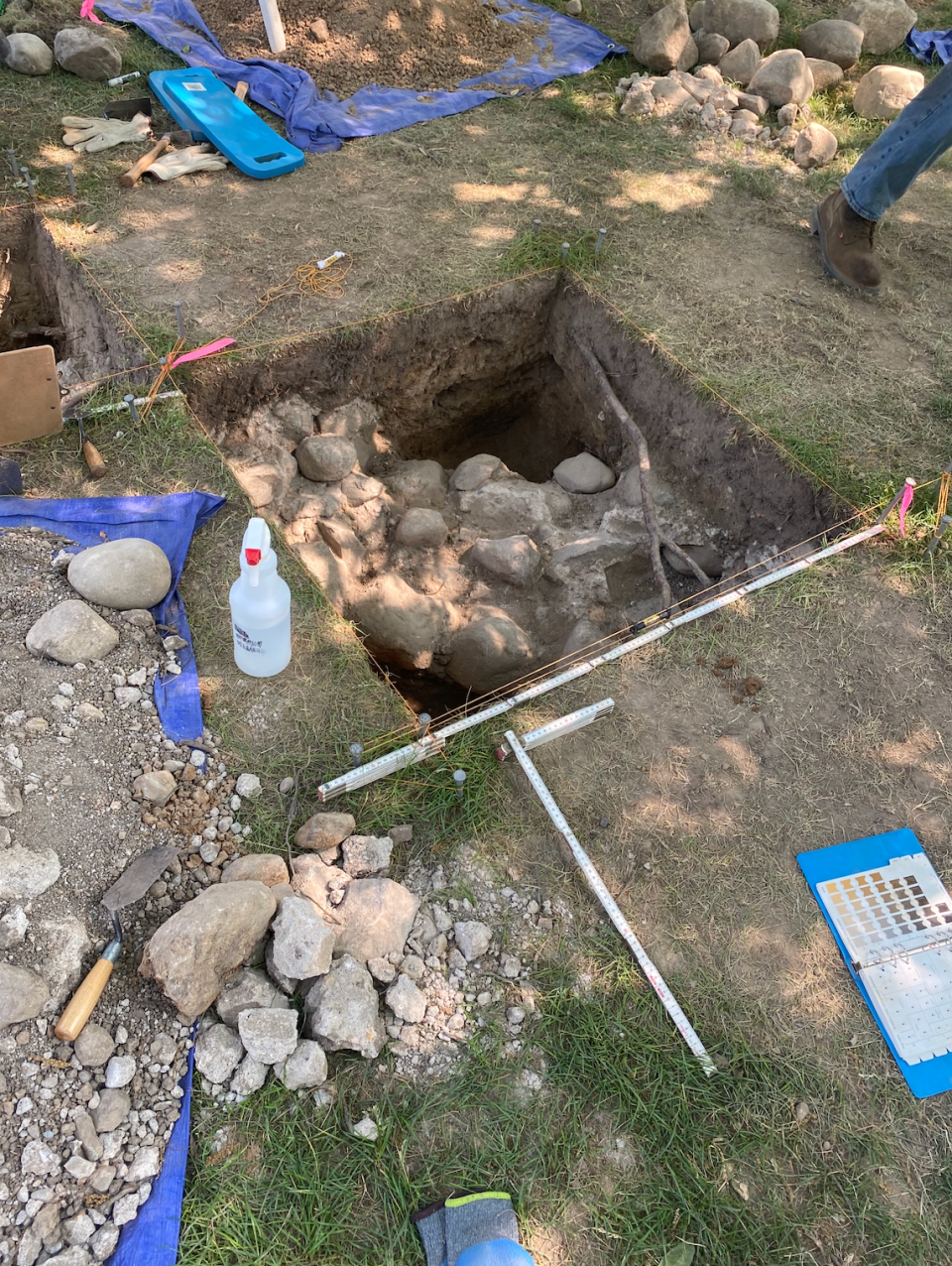Michigan State University workers stumble across buried, 142-year-old campus observatory

EAST LANSING, MI — What began as a simple hammock installation led Michigan State University workers to uncover a more-than-century-old part of the university's history.
Employees with the school's Infrastructure Planning and Facilities Department were digging holes close to student residence halls near West Circle Drive in June when they encountered a "hard, impenetrable surface under the ground," MSU said in a release Wednesday.
Workers initially thought they had uncovered a large rock or old building foundation. Workers contacted MSU's Campus Archaeology Program, and staff referred back to old maps to determine what workers had dug to was the foundation of the university's first observatory which was constructed in 1881.

Historic Lahaina suffers in wildfires: Historic Maria Lanakila Catholic Church still stands after fires in Lahaina, Maui
The observatory was built by then-professor Rolla Carpenter and is located behind the current-day Wills House. Carpenter graduated from Michigan State Agricultural College in 1873 and taught math, astronomy, French and civil engineering, according to the release. It was built in 1927 for the U.S. Weather Bureau but donated to the university in the 1940s and named after H. Merrill Wills, the U.S. Weather Bureau meteorologist who lived there, according to MSU's website.
The Wills House once held MSU's meteorology department, but extensive renovations of more than $970,000 were undertaken beginning in 2015. Plans for the building included office space for several MSU officials.
Ben Akey, a university archaeology and anthropology doctoral student, said in the release the discovery gave a look into what the campus looked like then.
“In the early days of MSU’s astronomy program, Carpenter would take students to the roof of College Hall and have them observe from there, but he didn’t find it a sufficient solution for getting students experience in astronomical observation,” Akey said. “When MSU acquired a telescope, Carpenter successfully argued for funding for a place to mount it: the first campus observatory.”
Akey said the observatory was for just a handful of professors and a small student population when the university was called Michigan Agricultural College and the university's archives and Horace Smith's "Stars Over the Red Cedar" book were used to confirm the discovery.

“The campus archaeology program is designed to protect and mitigate our below ground heritage here at MSU,” Stacey Camp, director of CAP and associate professor of anthropology at MSU, said in the release. “We collaborate with IPF on construction projects and we are involved in preplanning stages to ensure that if they potentially hit an archaeological site, we can protect it in some manner.”
Titanic wreckage: Where is the Titanic wreckage? Here's where the ship is located and how deep it is.
MSU's current observatory is located at the intersection of Forest and College roads.
MSU spokesperson Alex Tekip did not immediately know how MSU planned to proceed but said a ground penetrating radar would be used at the site on Aug. 9 to learn more.
Contact reporter Krystal Nurse at 517-267-1344 or knurse@lsj.com. Follow her on Twitter @KrystalRNurse.
This article originally appeared on Lansing State Journal: Michigan State unearths 142-year-old observatory buried on campus

